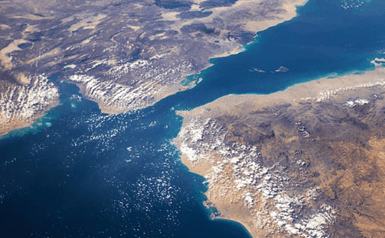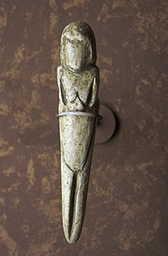Chapter 1: Introductions
Around 1739 – Braving the Atlantic

Around 1739 – Braving the Atlantic
Near the horizon we see a small wooden vessel sailing through St. George’s Channel past Ireland and Wales. It has just begun its journey bringing goods and passengers to the new world. This vessel happens to have some very special passengers, specifically my grandfather’s, grandfather’s, grandfather’s, grandparents. In other words, my sixth great grandparents, David Logan and his wife Jane Logan (nee McKinley).
Let’s take a moment to appreciate the bravery of our ancestors as they charge into an uncertain future. Make no mistake, this was both a harrowing and perilous journey. Thanks to disease, piracy, and malnutrition not all passengers survived[1]. If you were lucky enough to make it to the new world you did so after dealing with rough seas, cramped accommodations, uncertain durations, very basic food and questionable sanitation.
David and Jane’s voyage is just the latest of the thousands of uncertain journeys taken by their ancestors. To better understand why they are willing to take this risk, we will turn our gaze to the even more distant past where Humans colonize our entire planet.
[1] Records for this time are incomplete so there is no way to calculate mortality rates, I have seen guesses as high as 10%
Chapter Two: From Africa to the British Isles
A beginning
Through yDNA geneticist have been able track all living men to a common ancestor, they have called the “yDNA Adam”. Adam lived in Africa approximately 235,000 years ago and he is the 9400th great grandfather[1] all living men. What about Eve? She[2] lived around this time as well. Odds are that this “Adam” and this “Eve” never met and probably did not live at the same time. However, they both lived in Africa.
Adam’s descendants spent the next 75,000 years spreading across Africa. During this time some left only to return. Then, approximately 60,000 years ago my 2,400th Great Grandfather (GGF) crossed a Landbridge from modern day Djibouti entering the Arabian Peninsula going across a land bridge which today is under the straits of Beb-el-Mandeb. This crossing marked the start of humans expanding to the rest of the world. The speed was impressive, with Australia being settled within 5,000 years.[i] This kind of rapid expansion required many journeys across may paths, but we will stick to our ancestors’ path.

The spreading tribes
As the offspring of our 2,400th GGF spread across the coast of the Arabian Peninsula and into present day Iran, they would have experienced a much different world than we did. Their coastlines are under water today which is why they could walk across the straights of Beb-el-Mandeb. In addition, in their time the Arabian Peninsula was green and filled with large land mammals.
Expansion continued through a north-easterly trek along the coast. It is around this area, approximately 45,000 years ago, that our 1,800 GGF and his tribe headed due east across Southern Iran into Northern India. For 17,000 years they wandered around India and Asia until our 1,000th GGF settled in the steps of Mongolia near the Southwestern tip of Lake Baikal. He is also the first person to have the yDNA mutation known as Haplogroup – R. In addition to ourselves, one of his descendants is the “Mal’ta Boy” whose remains are in the Hermitage Museum in Saint-Petersburg. To better understand the life of our 1000’th GGF let’s take a quick look at this culture.
The Mal’ta
In 1920 CE, the remains of a child were found near the SW tip of lake Baikal. These remains were dated to 24,000 years before the present time. They contained enough materials to allow genetic testing[ii]. As a result, we know that he, like us, is a member of haplogroup R. He was an “Ancient North Eurasian” which is a genetic intermediate between modern Western Eurasians and Native Americans. To survive the long dry winters, he would have lived in houses made of mammoth bones that were covered in furs and partially sub-terranean. His people were artistic and spiritual as evidenced by figurines found in burial sites. They were big game hunters as evidenced by Mammoth bones and Reindeer antlers. [iii]

Side note, they also tested the “Mal’ta Boy’s” mtDNA and found that his maternal line was part of the “U” haplogroup[3]. This is especially exciting to me as in 1941, our grandfather John Logan married my grandmother Jeanne Smith who is a direct descendant of a woman in the U haplogroup who was living around that time. Given that there were only ~3m people living at that time, we can’t fully discount that John and Jeanne’s direct ancestor knew each other, and who knows, maybe they were a couple.
Ice’s influence
At around 20,000 before the present time and we find our 800th GGF in Eastern Kazakhstan. He is experiencing the peak of the last ice age with global temperatures 5 degrees C colder than today.[iv] During this time much of North America and Eurasia (including the British Isles) was under thick ice sheets, cutting off the northern latitudes. This kept our next 400 generations around the Caspian Sea until the last ice age came to an end, 10,000 years ago.
It was during these 400 years that one of our great grandfathers had a yDNA mutation and marked the beginning of Haplogroup R1B which is the most frequently occurring haplogroup in Western Europe. During this time, humans also advanced as shown in their art, the refinement to stone tools and the domestication of my favorite animal, the dog.
As the ice age came to an end, thawing ice sheets exposed new lands in Eurasia. As temperatures increased, humans moved North with some reentering the British Isles. Our 480th GGF, though was in Kazakhstan. His descendants remained in this area for the rest of the Stone Age.
As our ancestors lingered, they experienced one of the biggest life-changing events, the Agricultural revolution. This revolution started in the Middle East and quickly spread across Eurasia bringing with it permanent settlements, new technologies like pottery, advances in art and the echoes of the first civilizations.
To the Isles

It is 4250 BCE and our 250th GGF is now in Ukraine just above the Black Sea. The Bronze Age had not quite made it here and while they had the technology of agriculture, they were still nomadic. Over next 950 years our ancestors slowly moved west until 3300 BCE our 215th GGF entered central Europe near present day Poland, Czech Republic, and Slovakia. Of interest he must have had some genes for intelligence as he was also the 200th GGF of Copernicus.
Over the next 700 years our ancestors spread across Western Europe until finally our ~185th GGF stepped foot in the British Isles around 2600 BCE. He brought with him a mutation in his yDNA becoming the progenitor of our major Haplogroup – L21. This haplogroup is linked to the “Insular Celts” who are defined as the speakers of the “Insular Celtic Language”. It is believed that this remains the dominant lineage in Ireland, Scotland, Brittany, and Wales.
In addition to being our ancestor, our ~185th GGF is also the ancestor of Daniel Boone, Joseph Smith, William White, Clan Campbell, Clan McLaren, House Stuart, and Alex Haley. This is an interesting mix, but I would like to call a few out. Daniel Boone would later explore Kentucky with his very distant cousin, Benjamin Logan, the son of our very own David Logan. In the 1600s despite their shared yDNA, Clan Campbell and McClaren got into a bit of a fight with Clan McGregor ending up chief-less and landless.
Finally, there is Alex Haley who wrote Roots. He can trace his yDNA to William Harwell Baugh who worked as an overseer on the Haley Plantation in Alabama. William had a son named Alexander Baugh Haley in 1845 with a woman who was enslaved on this plantation, her name was Sabrina.
A quick view of the Bronze and Iron Age
It is estimated that the Bronze age arrived in the Isles around 2500 BCE. This is also the time when Stonehenge was being completed. It is very difficult to pinpoint where in the Isles our 180th GGF would have lived given the wide distribution of Haplo R-L21 across SW England and Ireland. This is also where the Logan lines start to split up, meaning that if you meet a Logan, you are probably at least 180th cousins.
For the next 3000 years it will be very difficult to pinpoint the location and activities of our ancestors. Therefore, I would like to highlight a few key events in the Isles:
- 55 BCE – Julius Caesar invaded the British Isles, interestingly the Romans left almost no y or mt DNA in the Isles.
- 245 CE – Saxons raid the southeast coast of England.
- 449 CE – Hengest – Saxon Leader, arrives in England.
- 793 CE – Viking raids begin.
- 843 CE – Birth of the kingdom of Scotland, uniting the Picts and the Scots.
- 878 CE – more Viking raids though the Vikings were defeated.
- 980 CE – for the next 100 years the Danish continued invading until Anglo-Saxon kings paid them for “security.”
- 1066 CE – William the Conqueror defeated King Harold at Hastings ending Anglo Saxon rule and creating a Norman regime.
[1] Assuming a new generation very 25 years
[2] As traced through mitochondrial DNA
[3] Every male has a separate yDNA and a mtDNA haplogroup. Women only have mtDNA haplogroups as they do not have yDNA
[i] The Journey of Man by Spencer Wells – pg 60
[ii] National Library of Medicine – Upper Palaeolithic Siberian genome reveals dual ancestry of Native Americans – PMC (nih.gov)
[iii] Mal’ta (ca. 20,000 B.C.) | Essay | The Metropolitan Museum of Art | Heilbrunn Timeline of Art History (metmuseum.org)
[iv] Climate .Gov – What’s the coldest the Earth’s ever been? By Michon Scott

